Jose Cuervo to Release Biodegradable Straws Made From Agave Waste
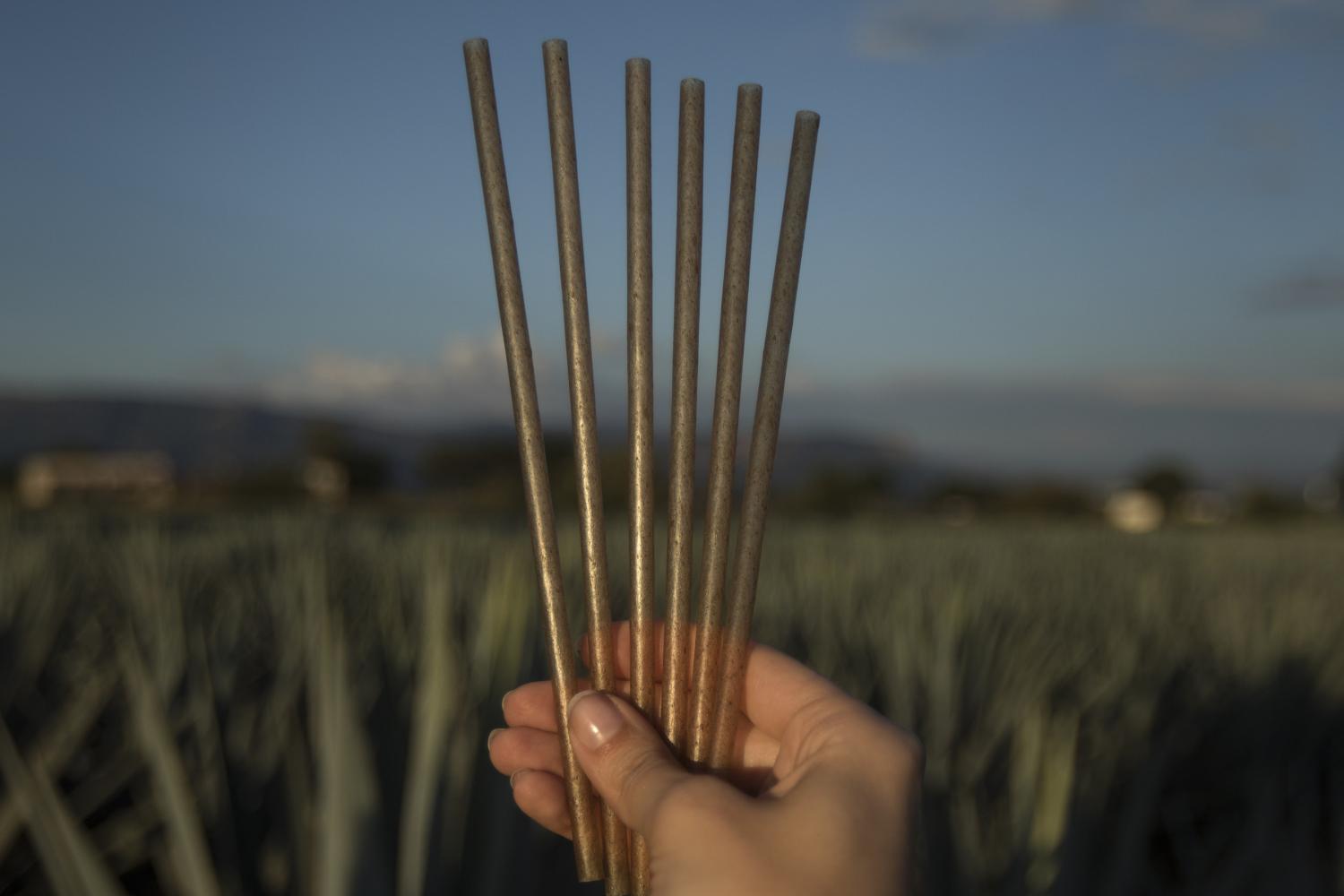
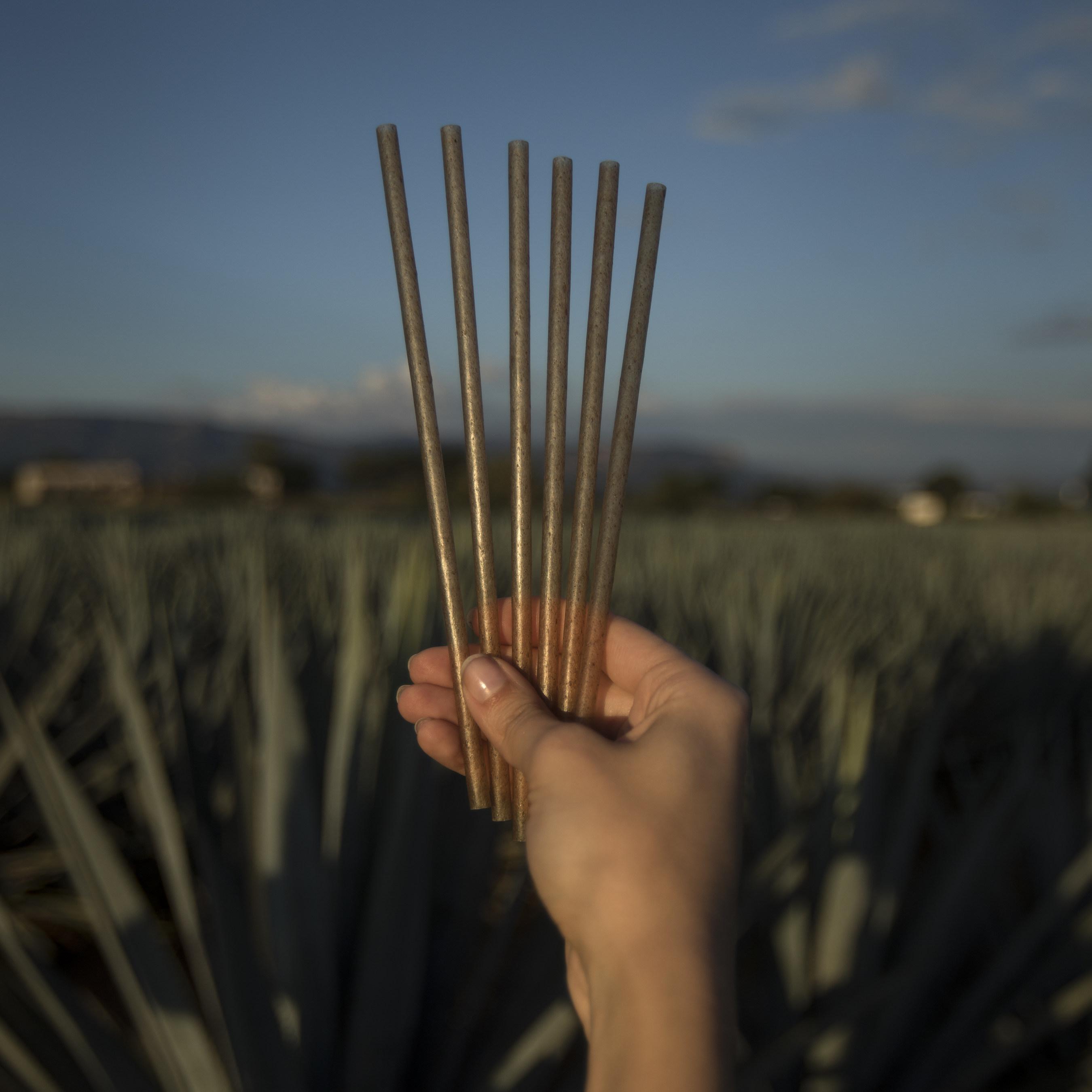
Jose Cuervo plans to introduce biodegradable straws made from agave fibers left over after tequila-making. In 2020, millions of these straws will be rolled out at bars, restaurants and events across North America as a new way to sip margaritas and the like.
The creation is part of the duly named Agave Project, which aims to celebrate this storied Mexican ingredient and find more ways to use it. Through the project, in-house innovators and conservationists have created a guitar, surfboard and even car parts using upcycled agave fibers.
A sustainable alternative to plastic straws
Jose Cuervo's design replaces about a third of the polymers used in a traditional straw with an agave-based alternative. Compared to paper and metal straws, the agave-based product has a mouthfeel that's similar to a traditional straw. And it won't dissolve in your drink as paper straws tend to do. Still, the agave straws decompose up to 200 times faster than their plastic counterparts and can fully biodegrade within five years in landfill conditions, according to Jose Cuervo.
The biodegradable straws also utilize more of the agave plant than just what is needed to produce tequila, taking better advantage of a plant that takes about six years to mature before being harvested. The tequila-making process generates thousands of tons of pulp, which distillers can recycle as fuel or compost. With this new process, the company can also upcycle the fibrous pulp into straws.
Furthermore, biodegradable plastic alternatives like these reduce air pollution and save energy by minimizing dependence on petroleum-based polymers. When plastic is produced, it emits toxins like benzene, xylene, carbon monoxide, ozone, particulate matter, and many other fumes that pollute the air and lungs. And the oil extraction and fossil fuel refinement needed to make plastic release their own toxic gases and carcinogenic vapors into the environment. The production of agave straws, however, doesn't require harsh chemicals or oils, reducing pollution and improving efficiency.
A drop In the bucket?
Agave straws are just one more step toward reducing plastic waste and the negative byproducts of its production. Scientists estimate there are 8.3 billion plastic straws littering shorelines worldwide, harming wildlife and disrupting ocean ecosystems.
A biodegradable alternative could reduce this staggering number. But straws only make up a small percentage of the more than 8 million metric tons of plastic that float into the ocean each year.
Although the biodegradable straws are a positive change, the initiative is arguably only a drop in the bucket of a much larger problem. In fact, alcohol production itself leaves a major carbon footprint: Every bottle of alcohol produced equates to roughly 6.3 pounds of carbon dioxide released into the atmosphere on average. This makes distillation the No. 1 contributor to a spirit's carbon footprint.
The power of small
But the public isn’t likely to give up stiff drinks any time soon, so several distilleries are searching for new ways to reduce their negative impact on the environment. Some convert their spent grain into animal feed while others locally source their grain or use food waste to produce spirits.
For its part, Jose Cuervo says it’s leveraging agave to support community development in Tequila, Mexico, providing agave fibers for local businesses to use in their products and funding other community efforts through its foundation.
While every company works individually to reduce its footprint, their efforts combine to create change. So, even though a simple biodegradable straw may seem like an insignificant change, this small difference—when paired with many other small efforts—could, over time, culminate to create lasting change.
Image credit: Jose Cuervo
*This story was updated on 12/19/2019
As COP25 Fizzles, GM Sizzles with New Electric Vehicle Battery Commitment

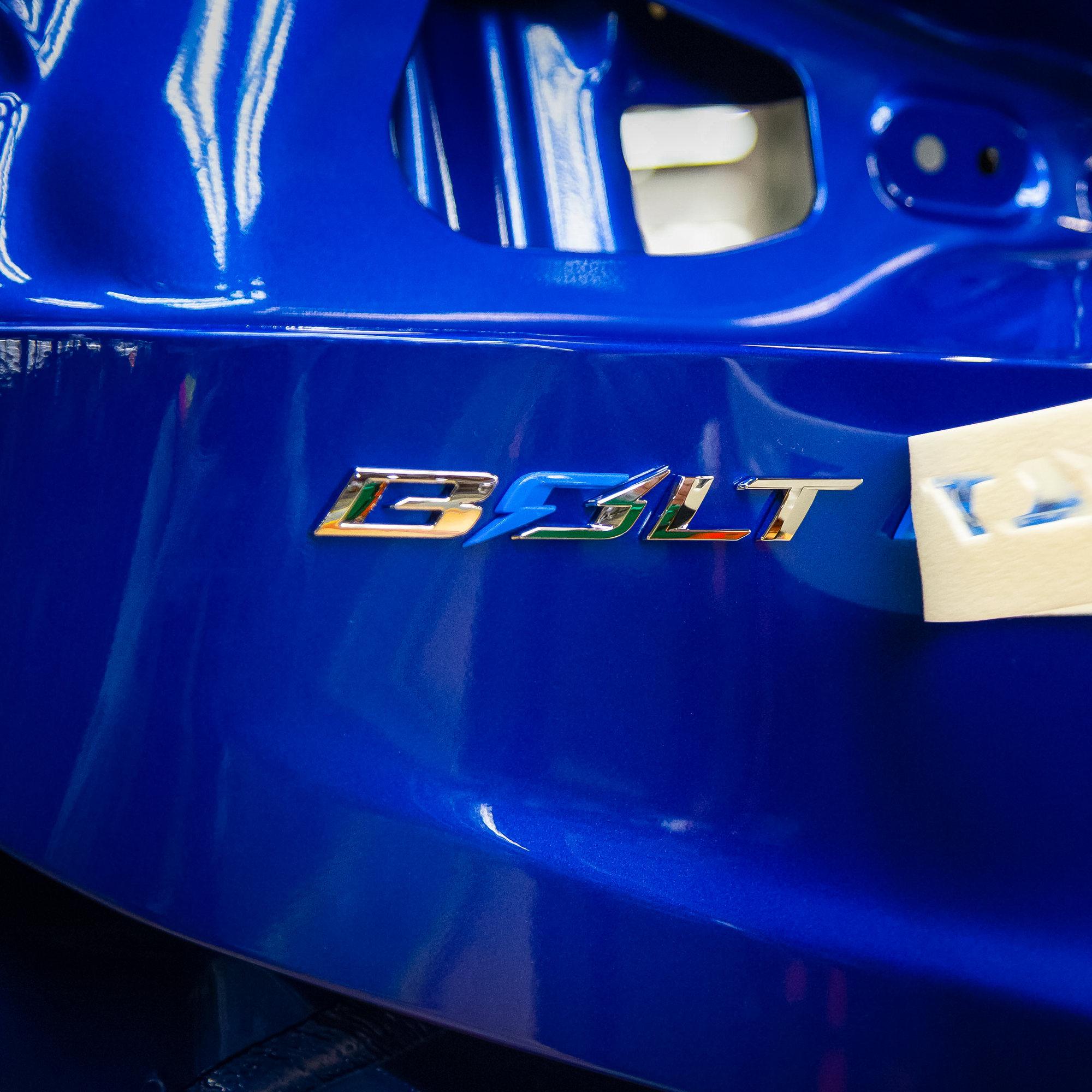
(Image: At least 20 new models will join the Chevrolet Bolt in GM's electric vehicle portfolio by 2030, the company claims.)
The COP25 climate talks in Madrid proved a major disappointment to those hoping that governments would agree on an aggressive course of urgent action. Nevertheless, some bright spots emerged outside of the official sessions. One of those came from General Motors, which announced a major new electric vehicle battery partnership last Thursday.
GM and climate action: It’s complicated
The GM battery announcement was welcome news from a climate action perspective, considering that the company seemed to be driving in exactly the opposite direction earlier this fall.
In October, GM joined Toyota, Hyundai and Fiat Chrysler Automobiles in support of the Donald Trump administration’s effort to challenge California’s strict zero-emission tailpipe regulations in court. The stance earned GM a big thumbs-down from environmental advocates.
Toward a national zero-emission vehicle plan
GM’s position on zero-emission vehicles is not so cut and dried, though. In a statement timed to the legal action, GM claimed it still supports a vigorous, national zero-emission standard to replace the patchwork of state regulations.
With a national plan in place, GM predicts at least 7 million electric vehicles will be on the road by 2030. That figure only includes long-range electric vehicles, not gas-electric hybrids with limited range.
As for whether that is meaningful talk or just talk, the company’s track record on clean power does indicate serious intent.
GM is a founding member of REBA (the Renewable Energy Buyers Alliance), aimed at helping businesses add 60 gigawatts of clean power by 2025. GM has committed to an RE100 goal of sourcing 100 percent renewable energy by 2050, and it partnered with the public utility Consumers Energy to implement the first “green tariff” in its home state of Michigan.
With the help of three virtual power purchase agreements in 2018, GM also has 416 megawatts of renewable energy in its fold, far exceeding its initial goal of 125 megawatts.
The company also gets high marks for energy efficiency and waste management among advocates. Among several recent honors for its green power efforts, last September GM won a Green Power Leadership award for direct engagement on renewable energy projects from the U.S. Environmental Protection Agency.
Driving electric vehicle costs down
With all of this in mind, GM’s recent battery announcement comes into sharper focus.
The company says it will enter into a $2.3 billion joint venture with the leading energy storage firm LG Chem to build a massive new electric vehicle battery plant in northeastern Ohio.
The partners aim to drive down the cost of an electric vehicle battery by achieving economies of scale all along the value chain, in addition to deploying the latest high-efficiency manufacturing processes.
That laser sharp focus on cost is significant, because the high cost of today’s battery technology is the defining factor in the price of electric vehicles compared to conventional cars.
Battery costs are falling rapidly, and projects like the new GM-LG partnership will help bring the cost of an electric vehicle down to parity with conventional cars.
Another significant part of the partnership is the accommodation of emerging technology. Battery technology is improving and transforming, and the plant aims to assimilate new designs as they come through the pipeline.
To keep the innovation flowing, the partnership includes an agreement to work collaboratively on new approaches that continue to drive down the cost of electric vehicle batteries.
In addition to reducing the cost of batteries, improvements in range and lifecycle will also help to make electric vehicles more appealing to the next generation of car buyers.
Without a national policy on vehicle emissions, it's up to consumers to consider new choices
In another interesting move, GM appears to be putting some friendly pressure on car buyers to consider electric vehicles over gas or diesel by introducing electric alternatives alongside new releases from its conventional models.
For example, GM is investing heavily in conventional pick-up trucks, but it also says it will introduce electric versions in 2021.
Last week, Reuters cited Cadillac president Steve Carlisle, who confirmed that Cadillac—a GM brand—is still planning to introduce a “large electric SUV similar to the Escalade.” However, Carlisle also said that Cadillac may continue to offer conventional models “depending on consumer demand.”
Presenting car buyers with a choice is pretty weak tea compared to an aggressive national zero-emission standard that would set benchmarks for manufacturers and provide incentives (and disincentives) for car buyers.
Nevertheless, without strong public policy, it’s up to car buyers to drive the national market for electric vehicles. The technology is in hand, and the nation’s charging station network is strong and growing.
In the coming years, businesses looking to replace fleet vehicles of all types—economy, luxury and light-duty trucks—can also put their climate action money to work by choosing electric.
Image credit: General Motors
Businesses Look to Cut Carbon Emissions in the U.S. South


Though the United States may pull out of the Paris climate agreement, U.S. business leaders are moving full speed ahead with their own efforts to tackle carbon emissions.
Earlier this month, nearly 30 companies with operations along the U.S. Gulf Coast kicked off what organizers call a first-of-its-kind industry initiative that will work across sectors to reduce emissions.
The Gulf Coast Carbon Collaborative includes companies with operations in Alabama, Louisiana, Mississippi and Texas. They pledged to meet on a quarterly basis to learn from one another, work to scale decarbonization strategies, build cross-industry capacity, and forge policy recommendations based on empirical results.
“There is tremendous industrial activity in the Gulf Coast Region supporting a strong economy,” said Andrew Mangan, co-founder and executive director of the U.S. Business Council for Sustainable Development (USBCSD), which brought together the companies along with New Orleans-based Entergy Corp. “At the same time, companies want to avoid putting more carbon into the atmosphere. They are interested in learning different strategies, techniques and ways they can work together to leverage greater carbon reduction.”
Participating companies include AEP, AmerisourceBergen, Armstrong Flooring, Bank of America, BASF, Dow, Entergy, Honeywell, Ingersoll Rand, Shell, the Southern Company, Tierra Resources, Total and Toyota.
Accelerating the shift to a low-carbon emissions economy
Organizers say the Collaborative will explore strategies to accelerate the shift to renewable energy, increase land-based carbon sequestration, and employ carbon capture, utilization and storage. They'll also look to modernize equipment and share best practices on how to finance efficiency upgrades.
“For any individual company and certainly for the region as a whole, there will be no single carbon reduction strategy,” Mangan told TriplePundit. “A number of different strategies must be utilized, and corporate climate leaders will need to work with other functions within their companies—including procurement, finance and legal— to develop and implement strategies.”
Energy company Entergy came to USBCSD earlier this year with the idea that led to the Collaborative, Mangan said. The company, which provides electricity to 2.9 million customers in Arkansas, Louisiana, Mississippi and Texas, was the first U.S. utility to cap carbon emissions voluntarily way back in 2001. The company is also a strong advocate for national action on climate change and an economy-wide price on carbon.
“If we can bring the collective power of this group and examples of the projects that come out of it to bear on developing good policies, they are much more likely to become reality,” said Chuck Barlow, vice president of sustainability and environmental policy for Entergy. “The result will be greater net benefits to our communities and our planet.”
While USBCSD will facilitate the Collaborative, Mangan stresses it will be business-led. He hopes it will lead to similar collaborations elsewhere, such as the Great Lakes region.
The Collaborative comes on the heels of a new report by the nonprofit Center for Climate and Energy Solutions, which recommends that companies seek out opportunities to work across sectors to reduce carbon emissions. “Decarbonization will move faster and more efficiently if more oars are rowing in the same direction,” the organization noted in the report.
The report urges companies in climate-critical sectors to ramp up investment in the technologies and workforce needed to decarbonize the economy, and to work with investors to shift long-term capital from higher-carbon to lower-carbon resources, products, and business models.
Image credit: Adam Reeder/Flickr
Niman Ranch Wants To Change How Americans Eat, Even After Merging with Perdue
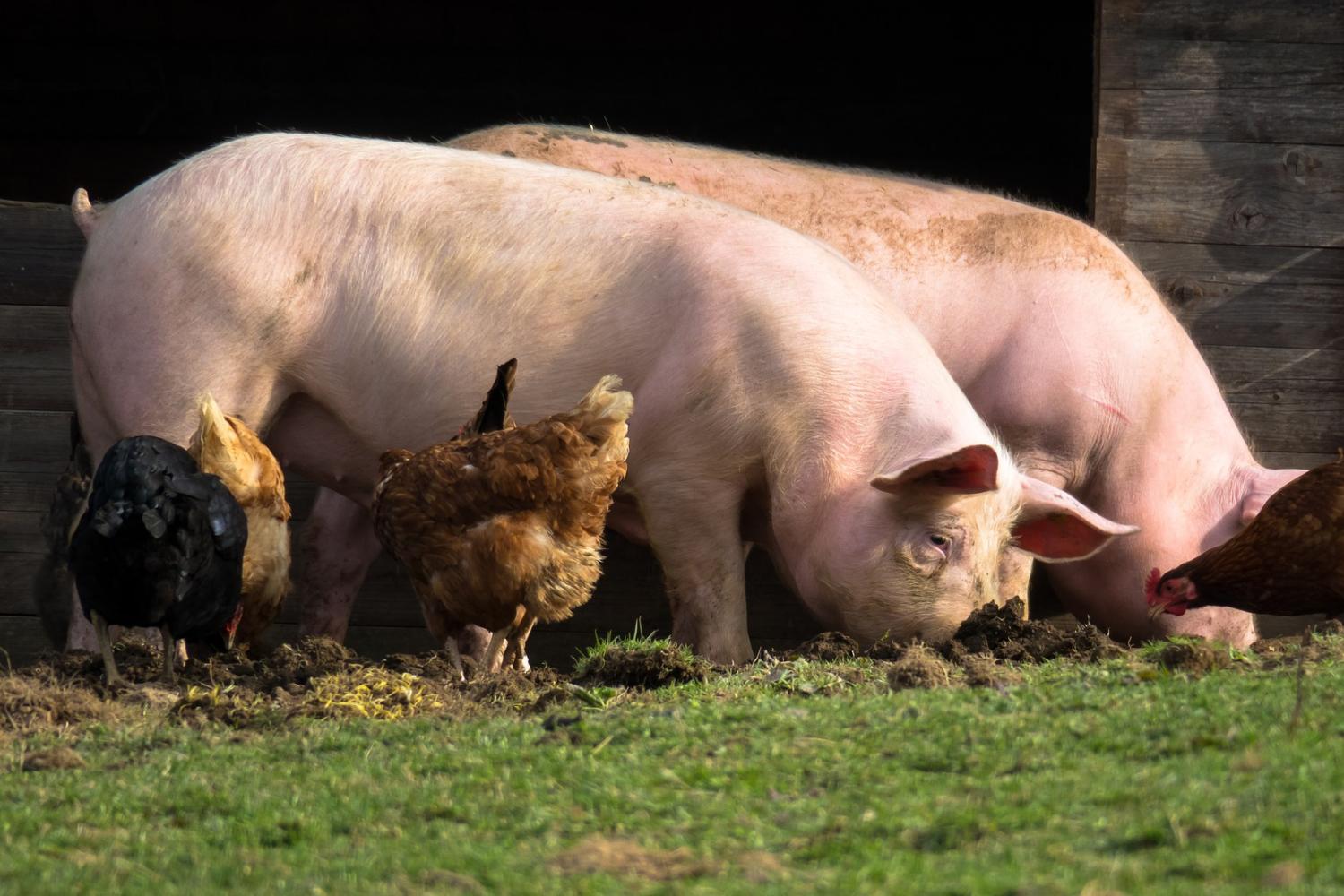
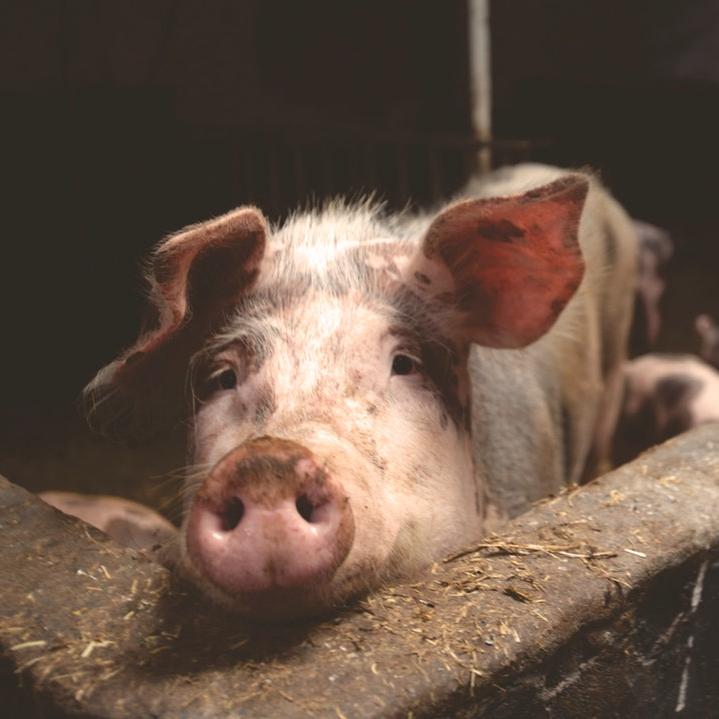
Niman Ranch is known for its sustainable and humane practices. The network of 740 independent family livestock farms and ranches is 100 percent third-party Certified Humane and has led industry change for years.
“I want to see sustainable farming practices and the humane treatment of animals," founder Paul Willis told Food Tank. "Moving that direction is something that is inspiring.”
It may come as a surprise that a company with such a strong and tested mission is owned by poultry giant Perdue Farms. The companies merged in September 2015, and despite some criticism, the partnership is proving a success in many ways.
New relationships drive positive change at Perdue
Skeptics weren’t coming out of left field. Unlike Niman Ranch, Perdue does not have a long history of humane animal husbandry. The fourth largest chicken producer in the U.S., Perdue has a troubled reputation when it comes to how it has treated its stock.
In Jim Perdue’s own words, “We had been focused more, as a traditional poultry company, on the end products that you see on the market, not so much on what’s happening on the farm, not so much on the farmers.” The Chairman of Perdue and Willis shared the growth this merger has offered both brands during the 2019 Food Tank Summit in New York.
Until recently, Perdue company policy required farms to breed and raise their chickens using methods many have called abusive, unnatural and objectively unhealthy. Finally, in 2016—half a year after acquiring Niman Ranch—the company presented an animal welfare policy that promised to guarantee certain freedoms for Perdue chickens, amongst which are “freedom from hunger and thirst” and “freedom from pain, injury or disease."
Perdue said his company has continued to grow and change for the better. It was the first major poultry producer to eliminate antibiotics from the chicken it sells, a destination Perdue said took 12 years to reach. Today, the company is one of the largest producers of organic chicken in the world, and it's in the process of retrofitting its chicken houses with natural light and opportunities for exercise.
Are Perdue and Niman Ranch an exception to the rule?
Acquiring small, sustainable brands is nothing new for major multinationals. Earlier this year, CDP analyzed the 16 largest publicly-listed consumer goods companies and found that 75 percent had acquired a brand with values like Niman over the past five years.
Purpose-driven acquisitions have more than quadrupled over that time, with recent examples including Plum Organics and Campbell Soup Co., Method and SC Johnson, and Annie's Homegrown and General Mills.
Even earlier, in 2007, Clorox acquired Burt’s Bees. In a conversation at the State of Green Business Forum shortly after the acquisition, Don Knauss, then CEO of Clorox, said the move was fundamental to the company's shift toward taking sustainability seriously.
Knauss listed three essential components to getting sustainability right after acquiring a green business, one of which was “get out of your comfort zone,” citing company conversations with the Sierra Club.
At Food Tank, Perdue described similar talks company executives had with animal welfare groups after buying Niman Ranch. These meetings now happen every summer, he said, emphasizing how big a leap that was for his industry.
Initially, there was some tension around the table, Perdue said. But everyone was aware that action at Perdue could be a tipping point for the entire industry, a power already demonstrated when the company eliminated antibiotics and competitors followed suit.
Is there a formula for a sustainable brand acquisition?
Compatibility of culture was top of mind as Willis offered his own thoughts on what made his company’s merger with Perdue successful.
“There were other potential buyers of Niman Ranch that I really wouldn’t have been happy about," Willis said. "What I came to find out more about later was Perdue is a family-owned business. That’s different than a publicly-traded company. I didn’t realize initially how much different that was. It makes a great deal of difference. It’s not just bottom-line driven.”
Family ownership and “looseness” of culture shone through how Perdue decided to embrace the ranch, experts observed in the Harvard Business Review. “There’s a formula that makes a company successful—culture, values—and you have to let those stay in place," Willis added. "They’re successful for a reason. Why Purdue-ize them? Because that’s not necessarily going to make them successful in the future.”
He also touched on Perdue’s strides to improve the way it raised chickens before the acquisition: Going antibiotic-free and organic were already in progress.
And Perdue was already noticing the benefits of raising healthier chickens. “We had just gone organic, and we had noticed that the organic chickens were different than the conventional—different in quality, tenderness,” Perdue explained
While Niman Ranch has gained capital, a new facility for harvest and infrastructure, Willis also points to the bigger impact he can now have on the way Americans eat. The fourth-generation hog farmer now sits on Perdue’s Animal Care Steering Committee, a group that didn’t exist before Niman Ranch joined the Perdue family.
Jim Perdue, however, believes his brand got the long end of the stick, and he agrees that Perdue has more growing to do. “We’re learning more from them than they are from us.”
12 Ways To Buy Used This Holiday Season


As is often said, the most sustainable item is one that already exists. Fortunately, resale and re-commerce are booming in the retail segment, and a host of major brands are already involved. To help you lighten the footprint of your holiday shopping this year, we rounded up where to find secondhand gifts that your friends will actually like (you're welcome).
Related: TriplePundit's Sustainable Holiday Gift Guide
REI
Most outdoor enthusiasts are familiar with REI's quarterly garage sales. But if you don't live near an REI store (or aren't brave enough for those lines stretched around the block), the outdoor gear brand has you covered.
Back in 2017, it linked up with Yerdle—a California benefit corporation that designs collection and resale platforms for major brands—to bring its famous sales online. (Yerdle also powers re-commerce for several other names on our list, including Patagonia and Eileen Fisher.) Expanded again earlier this year, REI's secondhand shop includes hundreds of gently used items—from outdoor apparel and footwear to tents, sleeping bags and backpacks.
Patagonia
Patagonia sells gently used outdoor gear and clothing for men, women and children in its online Worn Wear shop. In November, the certified B Corp expanded its foray into reuse and re-commerce with the ReCrafted collection made from goods deemed too damaged to be sold in its secondhand store. Each ReCrafted piece is one of a kind and as durable as new.
Better World Books
Every purchase at online used book seller Better World Books supports literacy initiatives in the U.S. and around the world. The company donates a book for every book purchased through partners like Books for Africa and Feed the Children, and it has raised more than $28 million for libraries and literacy initiatives since 2003.
Taylor Stitch
Casual apparel brand Taylor Stitch offers a buyback program for its old garments and resells them online for a fraction of the price of buying new. Along with the gently used items in its Restitch shop, the brand creates workwear from garments too far gone to resell.
Eileen Fisher
B Corp fashion brand Eileen Fisher has collected more than 1.2 million garments since launching its take-back program over a decade ago. Gently used items are resold in the Eileen Fisher Renew shop, while well-worn pieces are remade into new designs as part of the Resewn Collection.
Etsy
Along with handmade goods, Etsy's marketplace features thousands of vintage and secondhand items—from vinyl records and housewares to toys and games—shipped from independent sellers around the world. Every Etsy shipment is carbon neutral, and the company plans to be powered by 100 percent renewable energy and send zero waste to landfill by the end of next year.

Kidizen
As well as an online marketplace for independent sellers to create and run their own boutiques for children's clothes, Kidizen is a community for moms to connect with one another. Shop online, or use the app for iPhone or Android.
The North Face
The North Face launched its re-commerce platform, The North Face Renewed, in 2018 and has since helped more than 37,000 pounds of used outdoor clothing find a new life.
The brand's parent company, VF Corporation, is eyeing re-commerce as a key trend in the apparel space and plans to launch similar platforms across its family of brands, which includes Vans, Timberland and Dickies.
The Renewal Workshop
Like Yerdle, the Renewal Workshop manages the infrastructure that allows major brands to resell secondhand items online. It works with companies like The North Face to run reuse shops on the brands' own websites and also sells used items in its own shop. You'll find apparel from labels like Prana, Indigenous and Mara Hoffman, as well as backpacks and luggage from Eagle Creek.
Arc’teryx
Arc’teryx offers buybacks for gently used outdoor apparel and sells it online at steep discounts, freeing up space in people's closets and finding a new life for durable goods.
Comma
In a slightly different way to buy used, this curated subscription box service features vintage menswear and accessories shipped monthly or quarterly. The boxes come in varying sizes—from two to six items per box—and are tailored according to a lifestyle survey to make sure no one ends up with stuff they don't want.
A Curated Thrift
Like Comma, A Curated Thrift is a clothing subscription box for vintage and secondhand items for both women and men. Decide how many items go into the box, and choose from several styles to suit every taste.
Image credits: REI/PR Newswire and Kidizen
Inside the First Global Standard For Tax Transparency


On April 3, 2016, the world woke up to revelations in the Süddeutsche Zeitung newspaper illuminating the murky use of offshore financial services and shell companies, which some individuals and companies were using to minimize their tax liabilities.
The Panama Papers, as the multi-country investigation became known, provided sensational stories involving politicians, rock stars and royalty. But what it also laid bare was the scale o tax avoidance on the part of global businesses, often in ways that are entirely legal.
Tax income is essential for governments to fund infrastructure and services—and support sustainable development both at home and internationally. Corporate taxes contribute to the wellbeing of the people in the country where they are paid and are a key means for companies to contribute to the local economies where they operate.
Yet serious questions have been raised over how the country-by-country taxes paid by multinational companies relate to the locations where they do business. Transparency to all stakeholders about a company's tax management approach, how much they pay and where they pay it is therefore highly relevant from a sustainability standpoint.
By any estimate, the scale of the financial cost to governments caused by corporate tax avoidance is very high. Research from UNU-WIDER puts it at US$500 billion each year in lost revenue, while according to the IMF, the figure is up to US$600 billion, with low-income economies disproportionately affected.
What this emphasizes is that non-transparent tax practices make it difficult for companies to show how they are meeting their societal obligations. And that includes to governments, the environment and the communities where they produce, store, or sell their products and services.
While businesses typically release some tax information, accessible data on how much tax companies pay—and where—can be difficult or impossible to find. When it is available, it is often technical, aggregated and based on country-specific legal frameworks.
As a result, there have been growing calls—from investors, governments, civil society, the media and the public—for tax transparency, including comprehensive and comparable disclosure on a country-by-country basis.
It was against this backdrop that in 2017 the Global Sustainability Standards Board (GSSB), the independent entity that oversees the development of the GRI Standards, of which I am the chair, appointed a Technical Committee of experts to create the first global reporting standard on tax transparency.
This multi-stakeholder group included international experts on tax. The draft Standard they developed then underwent global consultation, including a 90-day public comment period earlier this year, to gather views from all interested parties. That process emphasized the widespread demand for better information on the taxes multinational corporations pay, especially from investment institutions.
Just two years on from the standard being first proposed by the GSSB, GRI launched the new Tax Standard last week. Published on Dec. 5, it is freely available for any organization to use to disclose their taxes in a transparent way that adheres to global best practice.
Adoption of the GRI Tax Standard—and widespread organizational reporting of tax strategy and country-by-country tax payments—will enable an open debate between reporting organizations, government, the public, and civil society about tax policies and practices within jurisdictions. For example, it can contribute to discussions about how tax revenues can promote sustainable development.
The scale of initial backing for the new GRI Standard is very encouraging. We have seen major investors, industry bodies, civil society activists, charities, trade unions, and many other groups from around the world voice their support for the Tax Standard and the greater transparency it seeks to achieve. To highlight just a few supporters: asset managers Royal London and Hermes, Accountancy Europe, Oxfam, the U.N.-supported Principles for Responsible Investment, global union federation Public Services International, and civil society groups such as the Tax Justice Network and FACT Coalition.
As the turmoil that resulted from the Panama Papers shows, more openness on tax transparency is necessary if we are to start to rebuild public trust in companies, strengthen corporate accountability and facilitate the informed dialogue that stakeholders rightfully demand. I believe GRI’s Tax Standard can enable a significant and progressive step forward in that journey.
Image credit: Philipp Birmes/Pexels
Why Brand Strength and ESG Matter To Investors
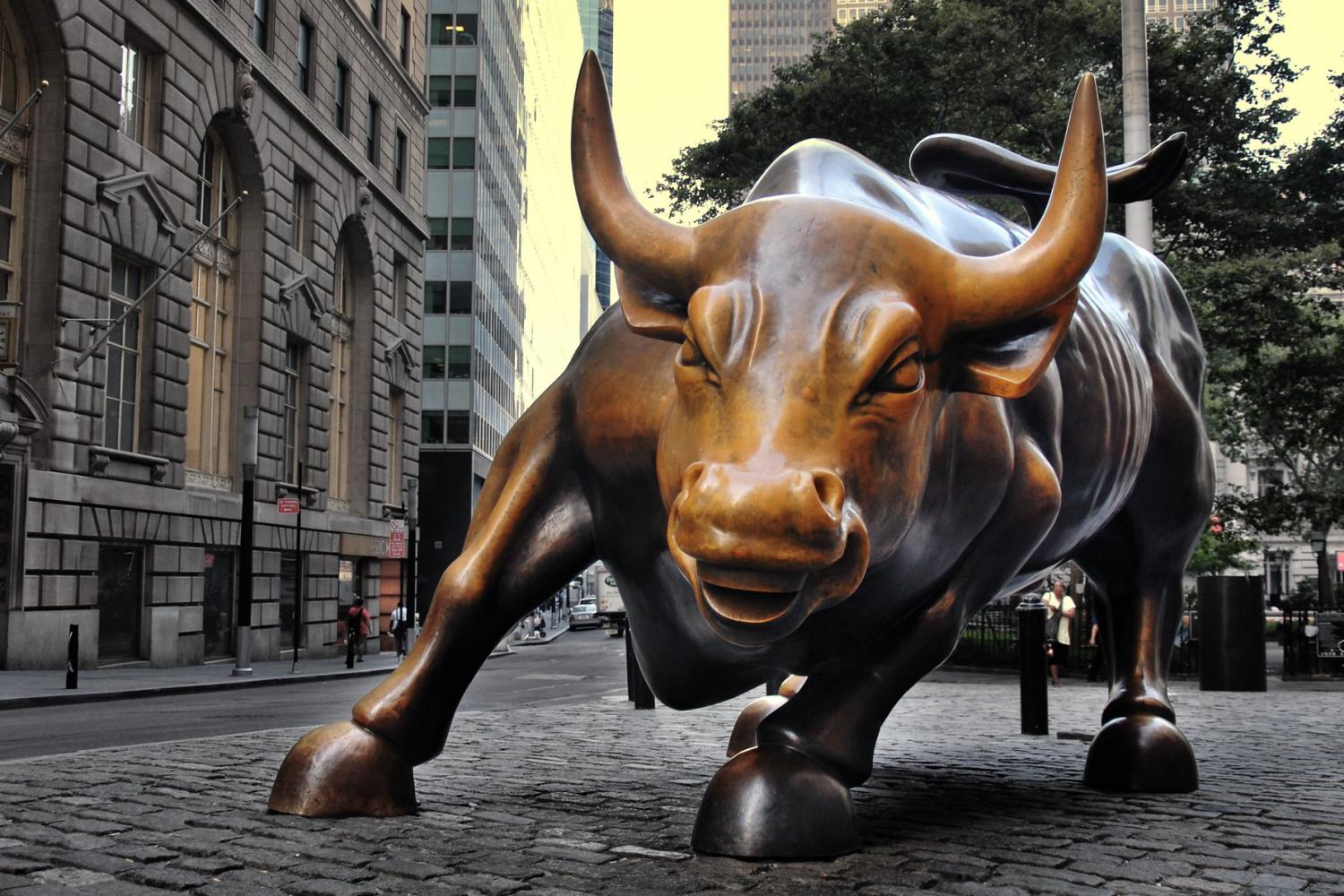
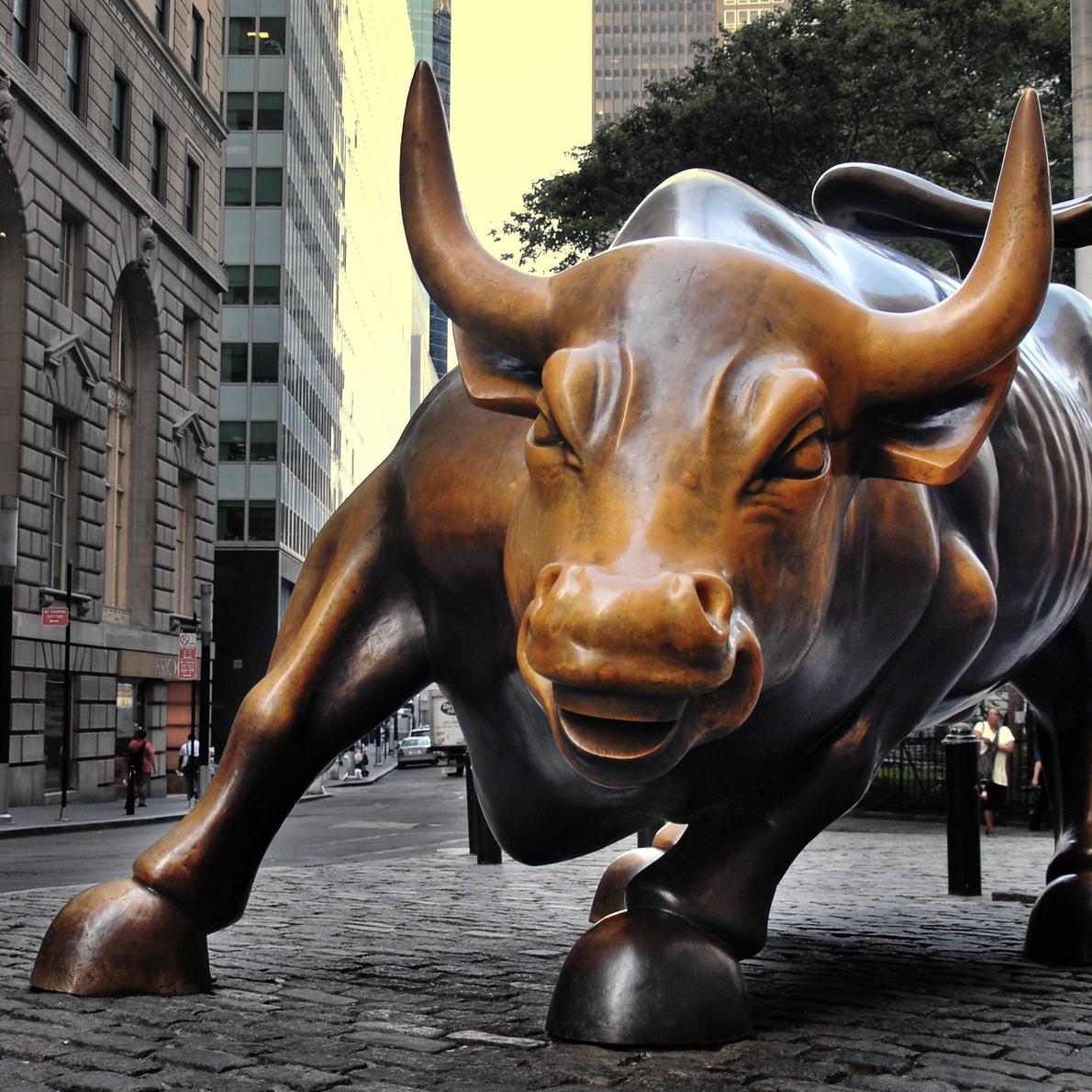
What is a brand? Branding is a key contributor to corporate value, yet there is no agreed upon definitions of a “brand.” Most of us have a vague understanding that it is something more than just a company’s logo or advertising campaign, but we lack a consistent way of putting some guidelines around the concept. A brand is primarily measured perceptually. So, one way to frame a brand is that it is both everything we know (or think we know) about a company and a collection of a company’s people, ideas and conduct.
Brand plays a significant role in creating value for investors.
However you define a brand, it is essentially a subset of a larger tranche of value known as intangible assets. If one subtracts book value from market value, one soon finds that intangibles often represent more than 85 percent of corporate value. This astonishing percentage has risen from an estimated 17 percent in 1975, as estimated by Ocean Tomo, a financial research firm. Meanwhile, brand value forms a significant portion of intangibles which in turn makes up somewhere between 14 and 21 percent of the market value of the S&P 500. So, it is well worth considering a brand's value when investing.
Strong brands deliver for investors.
Marketers build and protect brands, resulting in an “economic halo" that enables a brand to recover from an economic downturn more quickly. Companies with strong brands are also less volatile than their competitors. This is a significant advantage for investors seeking to avoid risk.
Not so coincidentally, strong brands also tend to have high environmental, social and governance (ESG) scores. In this way, strong brands offer investors a great way to align their values with their investments.
How is a brand’s contribution and impact measured without industrywide standards?
While intangible assets don’t “sit on the books,” academics and researchers have been tracking changes in brand strength in one way or another for decades. Beginning in the late 1980s, many marketing consultancies created baseline performance measures to track important brand metrics for new clients. The idea was to demonstrate the value that marketing delivered to a business by measuring and evaluating brand strength.
One of the earliest consultancies to collect data on corporate brands was CoreBrand Analytics. Currently they track a base of 500 companies identifying powerful brands by quantifying three key aspects of brand perception. Their proprietary methodology annually surveys 10,000 respondents, all of whom are experts or senior business leaders. Respondents rank a brand on favorability measures such as: reputation, investment potential and strength of the management team.
Why do strong brands have good ESG scores?
Strong environmental, social and governance scores lend credibility when brand building, which is good news for investors because interest in ESG is at an all-time high. While there is no single standardized ESG scoring method, many research firms have filled the gap to provide investors with ways of understanding which companies are outperforming their benchmarks while remaining committed to ESG representation.
Brands need to be good corporate citizens. Customers and investors expect environmental responsibility, fair treatment of employees, and highly ethical behavior from management—and ESG scores are a leading indicator that helps ensure those outcomes.
Over the last five years, the undervalued strong brands in Brandometry’s EQM Brand Value Index demonstrated an average ESG score of 68, as scored by Sustainalytics, compared to 52 for the S&P 500 as a whole. This year 37 out of the 50 top performing brands in the index scored above the median on ESG measures—including HP, which has a perfect 100 ESG score, and Microsoft with a 96.
The bottom line
Although brand strength and ESG scores lack standardized methods of measurement, they are indeed measurable and are important indicators of a company’s strength. By taking these metrics into account, investors may be well-positioned to better evaluate companies going forward, especially as intangible assets continue to play an outsized role in corporate valuations.
Image credits: Sam Valadi and Craig via Flickr
TriplePundit's Sustainable Holiday Gift Guide


Holiday shopping can be tough when you have people and the planet on your mind. Sure, you want to add some cheer to your loved ones' season, but not with yet another mass-produced trinket that's destined for the landfill. Skip the big-box stores and fast-fashion retailers (let's be honest, your friends will secretly hate most of that stuff anyway), and opt for one of these ethical and sustainable gifts that align with your values.
To save you some time sifting through the ever-growing—and often greenwashed—roster of "eco-products," we rounded up this collection of useful, durable and sustainable gifts for everyone on your list. Holiday shopping = done.
Related: 12 Ways To Buy Used This Holiday Season
For the traveler: Cotopaxi Luzon Del Día backpack

Outdoor label Cotopaxi launched in 2013 as a public benefit corporation and certified B Corp. (Those two things are actually not the same—if you're curious, we have answers.) The company prides itself on ethical production, from materials sourcing to fair labor.
As part of Cotopaxi's (Re)Purpose Collection, the Del Día pack is made from fabric left over after other companies' production runs. Sewers at the brand's factory in the Philippines have creative control over the final look, meaning no two bags are the same. At 18 liters in size, this one works as well as a carry-on as it does for a hike.
For the outdoor enthusiast: National Park Pass

The big kahuna of sustainable gifts, this one is a no-brainer for your favorite outdoor-lover (or the friends who insist they "have just about enough stuff, thank you"). A single pass grants unlimited access to more than 2,000 U.S. National Parks and recreation areas for a full year, valid for the pass holder and up to three guests.
For the beauty lover: Beautycounter Glow Getters Trio
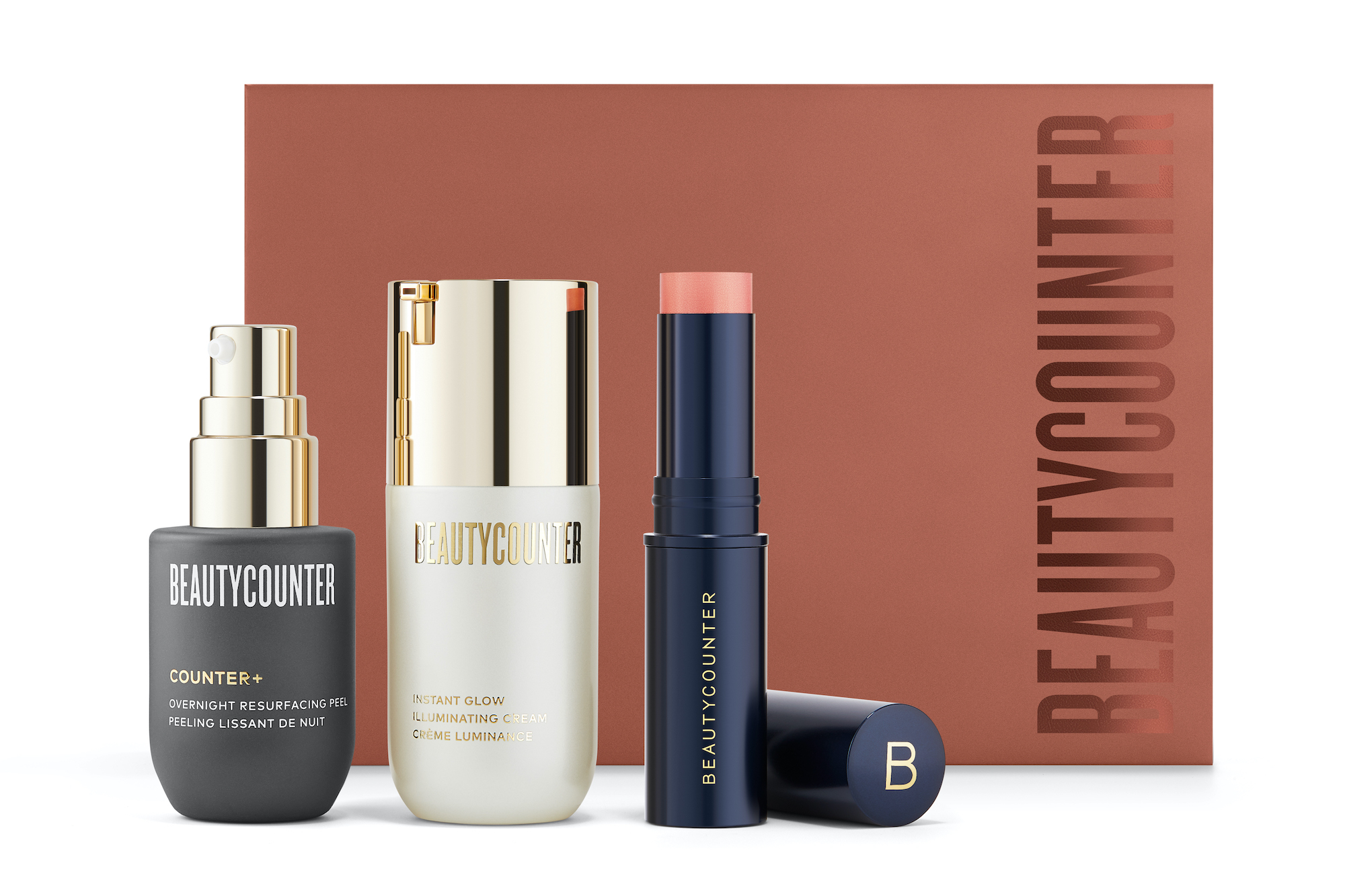
Cult favorite Beautycounter is the real deal when it comes to clean beauty at scale. This certified B Corp maintains a “Never List” of more than 1,500 banned ingredients and makes its ingredient selection process available online. The brand is also a strong advocate for clean beauty at the policy level, holding more than 1,000 meetings with U.S. lawmakers to advocate for product safety legislation since 2013.
Beautycounter receives top marks from the likes of Glamour and Allure—and, most likely, your favorite Instagram influencer—so it's sure to pass muster with even the pickiest skincare snobs. This kit includes a facial cream, overnight resurfacing peel and cream highlighter for a glow that keeps on going.
For the host and hostess: LifeStraw Home

Studies show that an increasing number of people reach for bottled water because they don't trust the water coming out of their taps. Whether their skepticism is warranted or not, it seems to be backfiring, as research indicates regular consumption of bottled water means regular consumption of microplastics that could be harmful to our health.
I wouldn't necessarily share these unpleasant findings with the hosts of your next holiday party, but the gift of clean water is always a good idea. Launched earlier this year—to much fanfare, thanks to its minimal design that's oh-so-2019—LifeStraw Home bills itself as the only filtering pitcher that protects against bacteria, parasites and microplastics, as well as chemicals and heavy metals like lead and mercury.
As always with LifeStraw products, every purchase pays it forward—providing drinking water for a child for an entire year. And hey, it's pretty, so there's that, too.
For the foodie: Homeboy Industries gift package
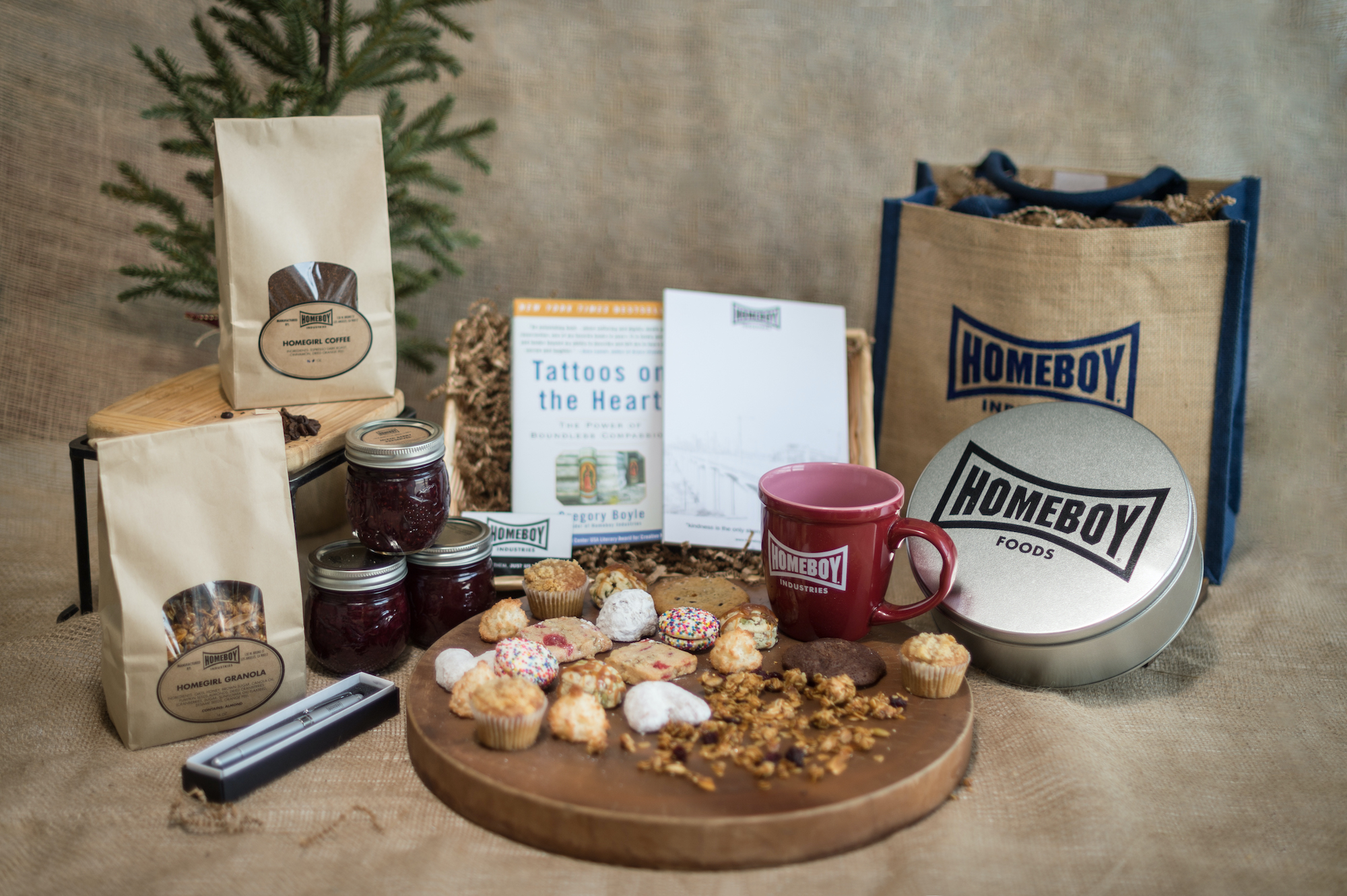
If you usually gift food this time of year, consider swapping your typical go-tos for these gift packages with a side of social consciousness. Operating under the motto "jobs not jails," Homeboy Industries offers employment, education, and other services to former gang members after they are released from prison.
Having served well over 100,000 people in its home city of Los Angeles since 1986, it now powers the Global Homeboy Network of more than 400 organizations committed to giving formerly incarcerated people a second chance.
Homeboy's selection of gift packages include coffee, snacks, preserves and baked goods, and all proceeds support its re-entry programs.
For the sweet tooth: Brownie boxes from Greyston Bakery

If sweets are your standby, take a second look at Greyston Bakery. As the supplier for Ben & Jerry's ice cream flavors like Half Baked, Chocolate Fudge Brownie and Justice Remix'd, the folks at Greyston know brownies.
This social enterprise also pioneered open hiring back in 1987. Having built its team without interviews, job applications or background checks, Greyston is now primarily staffed by people with criminal justice histories, as well as those experiencing homelessness, substance abuse issues or, for whatever reason, have trouble finding steady work.
As Joseph Kenner, vice president of programs and partnerships for Greyston Bakery, said at the 3BL Forum earlier this year: "We don't hire people to bake brownies. We bake brownies to hire people."
For the techie: Pela biodegradable phone case

More than 1 billion plastic phone cases are sold every year, according to Pela, and many are ultimately discarded by retailers after the next phone release renders them obsolete. To stem the tide of plastic phone cases entering our waste stream, Pela developed what it calls the first 100 percent compostable case.
Made from a patented biopolymer, the cases are designed to biodegrade even in a home compost pile. This is actually pretty unique, as many products marketed as "biodegradable" or "compostable" will only break down in industrial digesters, which are still unavailable in most cities. To sweeten the deal, these things come in every stye and color imaginable—even limited edition runs that commemorate environmental causes—so there's something for everyone.
For the audiophile: LSTN Satellite wireless speaker

LSTN's stylish collection of headphones, earbuds and speakers don't mess around on sound quality—and they give back with every purchase. Proceeds from the sale of LSTN products help give hearing aids to people in need, in partnership with the Starkey Hearing Foundation. LSTN has distributed more than 30,000 hearing aids over the past five years and teamed up with other brands like Delta Airlines to maximize its impact.
For the spa-goer: Lush Build Your Own Gift

Lush is well known as a clean beauty and skincare brand that thrives on social and environmental campaigns—and this company walks the walk. Its build-your-own-gift feature lets you customize your present with a bath bomb, soap and face mask, all available in packaging-free options and tied up in a reusable wrap.
Pro tip: Our friends at Lush say you can't go wrong with the Golden Pear Soap, Yog Nog Naked Body Conditioner and Polar Bear Plunge Bubble Bar for the skincare-lover on your list.
For the clean freak: Blueland Clean Essentials
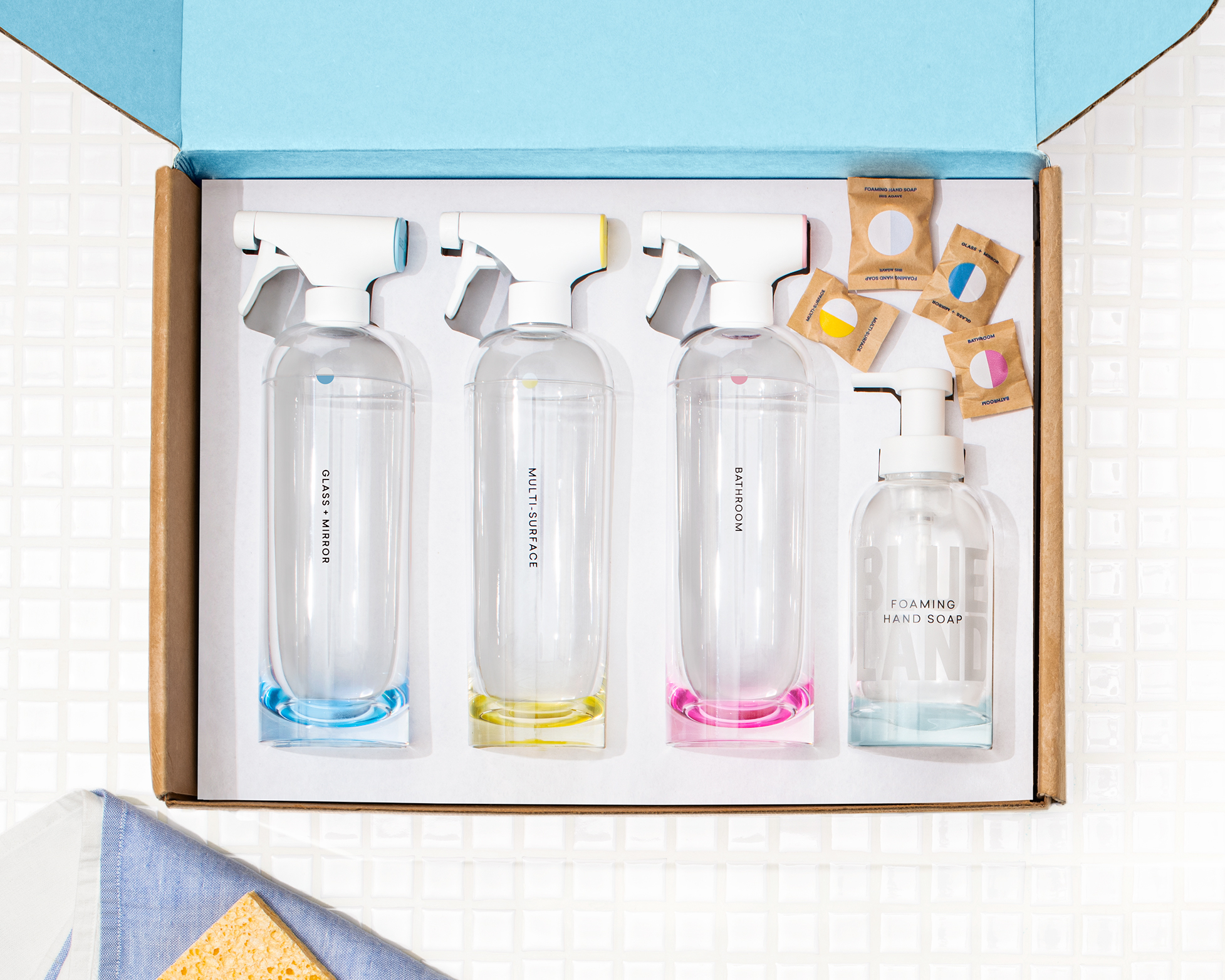
Okay, so concentrate products are nothing new. But judging by the warm reception this upstart brand has received on social media, its sleek designs may be enough to inspire even the uninitiated to give it a try.
The Clean Essentials includes three cleaning bottles, one hand soap bottle and four concentrate tablets (for hand soap and glass, multi-surface and bathroom cleaners). After receiving the kit, your tidy friends will get $2 refills of these nontoxic concentrates for life.
For the sustainability pro: Stasher Bundle

Another social media hit of 2019, this certified B Corp sells stylish and durable alternatives to zip-top plastic bags. The Bundle kit includes one snack bag, two sandwich bags and one half-gallon bag, all of which are BPA-free and safe for cooking, freezing and storing.
For everyone: Kiva Card

Skip the standard gift card for something that means much more. Founded in 2005, Kiva disburses micro-loans that allow people to pay school tuition, start or grow a business, or access needed health care.
Loaners can choose their borrowers, and they receive regular updates on how their money is being put to work. When borrowers repay the loan, it can be given to someone else—and the virtuous cycle continues from there. Over the past 15 years, nearly $1.4 billion in micro-loans have been disbursed on the Kiva platform, with a more than 96 percent repayment rate.
Image credits: Kira auf der Heide and Kari Shea via Unsplash; Cotopaxi; Holly Mandarich/Unsplash; Beautycounter; LifeStraw; Homeboy Industries; Greyston Bakery; Lush; Pella/PR Newswire; LSTN; Blueland; Stasher; Kiva
U.S. Schools Waste a Lot of Food: Small Shifts Can Fix That
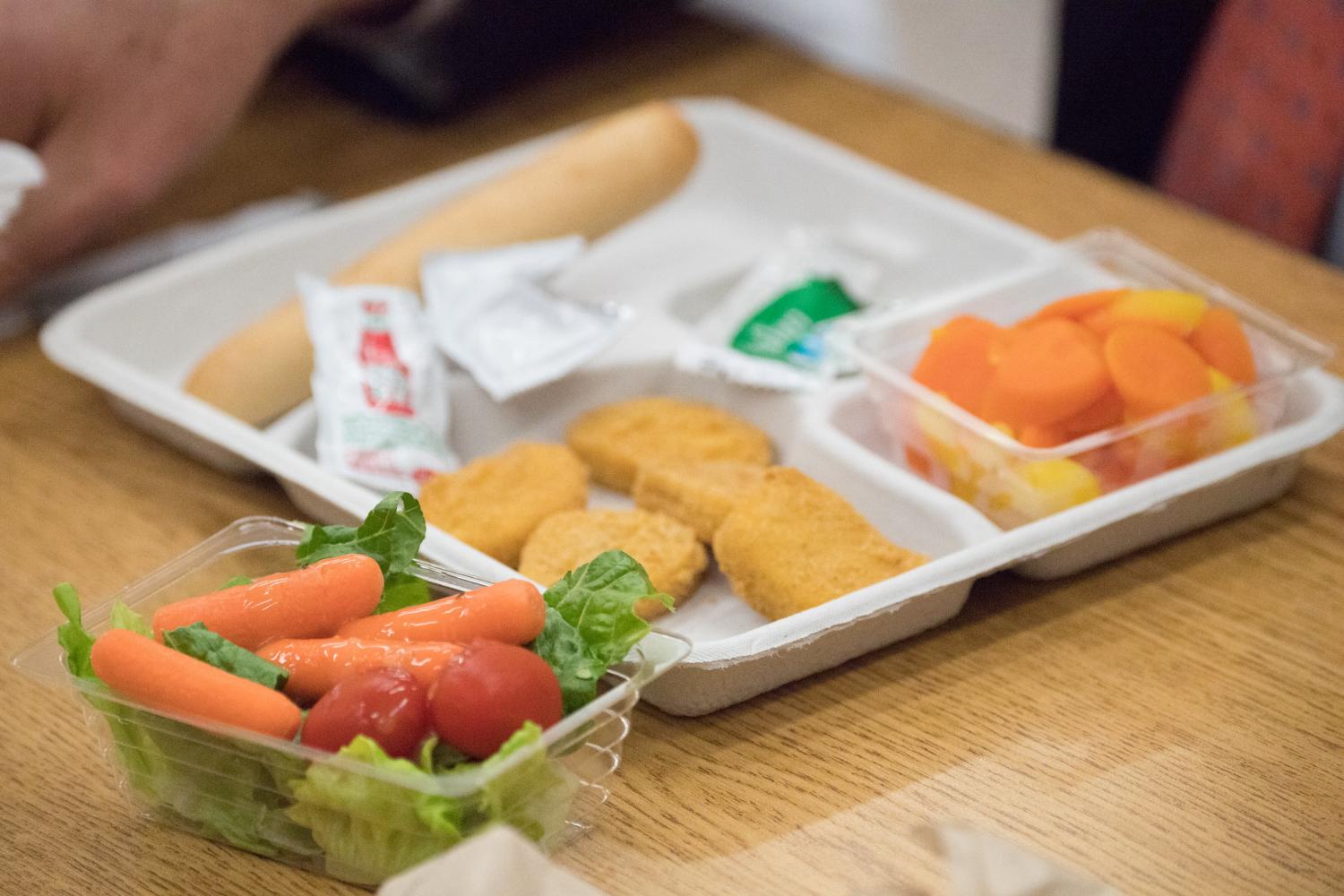
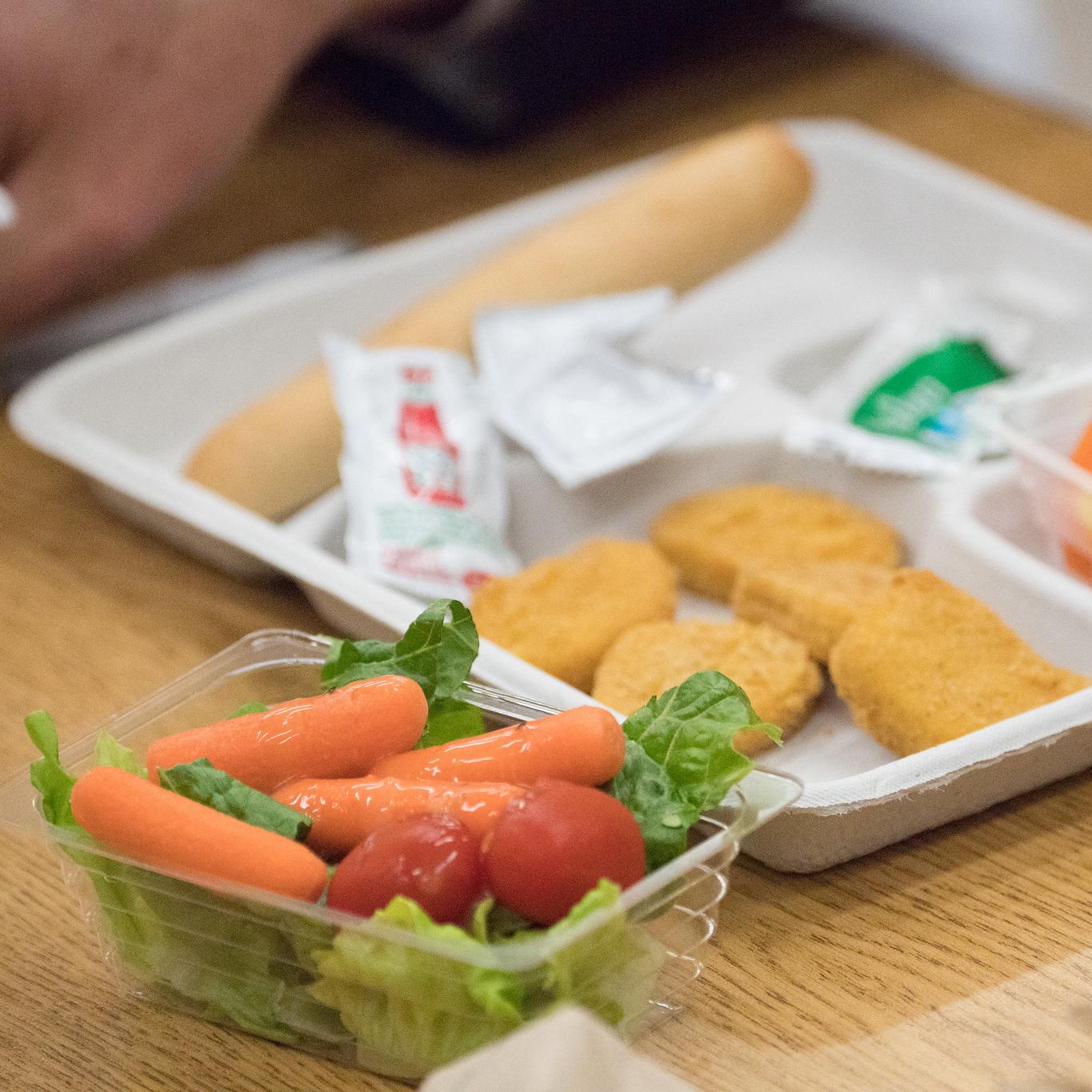
Every school day when the end-of-lunch bell rings and students return to class, a little something often gets left behind: food waste. Maybe their tray was over-filled, maybe they weren’t hungry, maybe they didn’t have enough time to finish everything. What’s left on their trays may be inedible scraps like banana peels, but some is likely edible food. Whatever the reason, this food ends up in the trash, to the tune of up to 530,000 tons each school year in the U.S. alone.
Food is our most precious gift and comes with a tremendous environmental, economic and social cost. Agriculture’s expanding footprint is the single largest driver of habitat and biodiversity loss. The global food system uses 70 percent of our fresh water and creates greenhouse gas emissions both during production and when food becomes waste and is landfilled. And all of this while more than 16 million children in America face hunger.
These numbers come from World Wildlife Fund’s Food Waste Warrior project, a first-of-its-kind combination educational program and plate waste analysis in U.S. school cafeterias.
With support from the Kroger Co. Foundation and the U.S. Environmental Protection Agency Region 4, we collected data in 46 schools across nine cities: Atlanta, Boulder, Cincinnati, Columbus, Indianapolis, Nashville, Phoenix, Portland and Seattle.
We found that each of the schools produced on average 39.2 pounds of food waste per student per year. For milk—a product that we singled out because of its nutritional value, environmental footprint and prevalence on the lunch menu—we found that an average of around 19.4 cartons per student per year are either getting spilled down the drain or tossed messily into the trash.
Starting to test a common methodology around gathering data on cafeteria plate waste was one of the key objectives of this program. We taught students and staff to run audits and consistently examine their waste streams to track progress and reduce—and we talked about the connections between food, what goes to waste and the environment.
The project didn’t formally test interventions specifically designed to curb waste. Still, something incredible happened.
Through education, awareness-raising, measurement and informal interventions, food waste in participating elementary schools dropped by an average of 14.5 percent over the timeline of the audits, about four to six weeks. Milk waste across participating schools dropped around 12 percent.
In the end, the top three elementary school performers reduced total food waste per student by a whopping 53 percent from first to last audit. If we could cut food waste this much in schools nationwide, it could mean huge benefits for the environment, the students and the schools.
Reducing total wasted food by just 3 percent, the average we saw from all participating schools, could add up to the equivalent of taking 12,400 passenger vehicles off the road for one year. If schools nationally reduced just milk waste by the average 12.4 percent we saw in our study, we could potentially save $17 million in lunchroom costs.
These savings could be reinvested back into food service programs to improve nutrition while also establishing the cafeteria as a real-world learning environment. Looking forward, there are several things school districts can do to realize—or even expand on—this opportunity.
Solutions range from focusing on a prevention-first model; consistent measuring; staffing up or utilizing volunteers and PTA/PTO investments to take on conservation or natural resource management responsibilities; implementing food rescue programs to help recapture and distribute safe, surplus food to students in need; and at the very least keeping food out of landfills. Schools could be the institutions making landfill diversion happen at scale immediately across the U.S. and discussing the connections between composting and healthy soils. Food should never be allowed to go to landfills.
While not all solutions will work for all schools, just about everyone can find some ways to reduce their waste. The most important thing schools can do is educate and empower their students. Seeing firsthand how much food is wasted and understanding the connection food has to nature and wildlife, students may willingly change their behavior, and then with any luck, they become lifelong food waste warriors.
For the sake of the planet, we can’t continue wasting 30 to 40 percent of all food we produce. And a new generation that appreciates the true value of food—and doesn’t view food as a disposable commodity—is an imperative for our future.
A version of this story was previously published in the 3BL Media newsroom.
Image credit: Flickr/U.S. Department of Agriculture
How To Get Better At Life Cycle Assessments (Seriously)
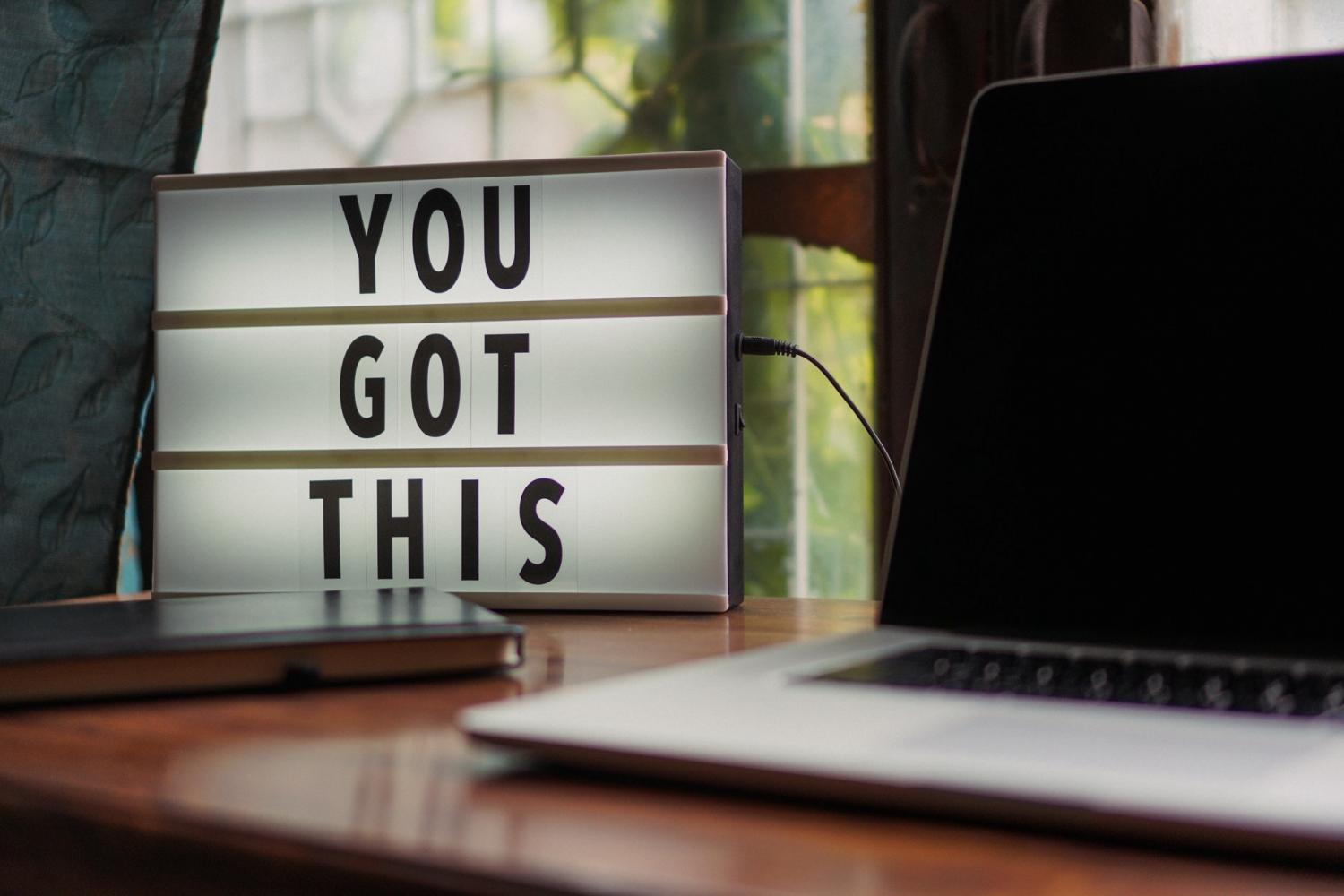

Knowledge is power, and any company pursuing more sustainable business practices needs to know the impact of its products at every stage—from raw materials to reuse, recycling or disposal. Fortunately, there is a proven, powerful technique for the gathering and presentation of impact information: the life cycle assessment (LCA).
Like a carbon footprint report on steroids, LCAs include data on any environmental footprint you can imagine—water, deforestation, pollution, you name it. By identifying hotspots in the supply chain, LCAs point out where environmental impacts are high. And counter to popular belief, most of these hotspots are also cost drivers—meaning steps to reduce impact are also steps to reduce costs.
Enterprises of all sizes can leverage this cradle-to-grave accounting to weigh the benefits and trade-offs of alternative materials, design for sustainability, modify production processes, and make other improvements in their supply chain and operations.
Like any research-oriented process, LCAs require care and attention to uncover previously hidden data from sources inside and outside your company. Even if you've done a life cycle assessment before, there's always room for improvement. These seven factors—compiled after almost two decades of conducting this type of analysis for hundreds of organizations—can help make your next LCA as efficient, effective and, above all, as easy as possible.
Save time and effort by identifying the questions you really need to answer in your life cycle assessment.
When you undertake a life cycle assessment, you’ll analyze one or more supply chains—and each can be incredibly complex. Narrowing your scope to focus on specific questions allows you to identify which aspects of the life cycle need high-accuracy modeling and which can be assessed in more general terms. This saves a great deal of time and may make the difference between completing a study or not.
Make interactions easier with a customized data collection workbook.
Most LCA data comes from colleagues whose primary expertise centers on things other than the life cycle assessment. As designers, engineers, distributors or managers, they typically don’t think like LCA practitioners. Everyone will have their own metrics, and their functional units are likely to be things like “minutes [or months] of operation,” “measurement above or below threshold,” or “number of workers required.”
Projects go much more smoothly when data collection workbooks reflect these differing perspectives. It simplifies the work and doesn’t force people to learn a new vocabulary. In many cases, you can speed things up even more by using a flow diagram rather than a workbook. These approaches improve the chances of getting the right data in a reasonable time frame—and the chances of winning colleagues’ cooperation next time.
Document what you’re modeling.
It’s all too easy, in the heat of a project, to rely on your memory and skip the sometimes-tedious process of recording how you arrived at a value or data choice. But this is inherently self-limiting.
You may know exactly what you did today, and why, but what about your co-worker who comes to help out next week? Next year, when you have to update the study, will you remember all the nuances? Clear documentation is an investment of time that pays off as an accelerator in the long run, boosting the chances for effective collaboration and long-term value from your study.
Keep (and share) a log of your assumptions.
A list of your assumptions provides a quick way to convey your starting point to colleagues, partners and decision-makers, among other groups. Looping them in can help them spot inconsistencies or confirm that you’re on the right track. It’s also a way of tapping into their knowledge of areas that could change. Early feedback ensures a solid study and reduces the risk of late-in-the-game surprises on all sides.
Be consistent in your data and methods.
We all strive to meet high standards, but there is no perfect life cycle inventory (LCI) data, no perfect LCA tool, no perfect allocation method, and no perfect impact-assessment method. To get maximum insight, avoid mixing and matching any of these, because you won’t know if the impact differences you’re reporting are due to a true difference in the life cycle or to flawed interactions.
Moreover, using a consistent set of data and methods over time makes you a more effective analyst by giving you a deep grasp of the set's strengths and weaknesses, as well as the types of trends you can expect to see with different types of projects.
Be open to different perspectives.
Yes, I just said you should be consistent. But sometimes different data, tools and methods can provide different insights—and new learning. If you’re feeling stuck or uncertain, don’t be afraid to test a different assessment method or look at different inventory. If you don’t learn anything, leave it out of your report. But if you do, the insights you get could make a real difference. Just be sure to apply the method consistently and document your process, as noted above.
Don’t work in a silo.
LCA work requires intensive research and diligent attention to detail. As a result, many LCA practitioners are most at ease when working alone. It’s almost a necessary personality trait. But mistakes are easy to make when you’re handling the quantities of data needed for even a simple study. It’s also easy to get deep into the weeds and miss the big picture.
Protect yourself and the overall effort by getting someone to check your data entry. Share your impact assessment with a big-picture thinker to get a different perspective. And if parts of your study involve technologies that are foreign to you, seek out an expert who can answer questions, even basic ones. You will almost certainly save time and reduce the risk of everyone’s worst-case situation: that your study doesn’t really show what you think it does.
Image credit: Jonathan Francisca/Unsplash, Prateek Katyal/Pexels, fauxels/Pexels